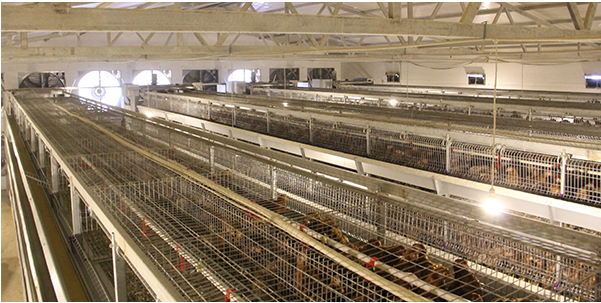What are the moisture-proof measures for automated poultry breeding equipment
- Published in Poultry raising equipment
When encountering hot weather, chicken coops using automated poultry farming equipment will be hot and humid. Excessive humidity in the chicken house will seriously affect the growth and production of chickens, especially the production performance of laying hens. This requires a good job of cooling down, but also to prevent the chicken coop from getting wet. The following editor will share the tips for reducing the humidity of the device, let's learn together.

- In order to avoid the frequent dampness of the chicken house with this equipment, when choosing the location of the chicken house, pay attention to choosing a high and dry place, which is conducive to drainage, waterlogging prevention, ventilation, and a quiet environment. In addition, when setting the direction of the chicken house, pay attention to the south of the chicken house to keep it warm and moist.
- 2.In order to prevent water leakage in the drinking fountains of the breeding equipment. Because nowadays chicken coops are mostly chicken battery cages, if the drinker leaks, the chickens below will get wet. If water leakage is found, it should be sealed or replaced according to the specific situation. If the floor of the chicken coop is leaking, clean up and wipe dry in time to solve the unfavorable factors caused by water vapor.
- Maintain proper stocking density. Breeding equipment should appropriately reduce the breeding density in summer. If the stocking density is still high in summer, it is not only not conducive to the heat dissipation between the flocks, but also not conducive to the moisture prevention of the flocks.
- Strengthen the ventilation of breeding equipment. In summer, the temperature is very high. Farmers should pay attention to ventilation and cooling. Generally speaking, the temperature of the chicken house should not be higher than 25℃, and attention should be paid to the occurrence of heat stress in chickens. In addition, ventilation should be strengthened during the summer breeding process to avoid the accumulation of moisture in the chicken house, which may cause excessive humidity and affect health.
- Disease prevention. Prevent and treat common summer diseases and diseases that are easily caused by humidity, and avoid diseases caused by excessive humidity, such as pullorum, gastroenteritis, infectious bursal disease, Newcastle disease, coccidiosis, etc.

The above is the editor to share the tips of breeding equipment and chicken coops to prevent moisture. In the future use, these methods can effectively reduce the dampness of the chicken house. I hope that these tips can bring some help to everyone.

